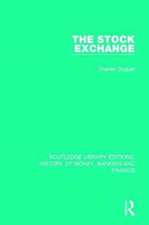Proximity, Distance and Diversity: Issues on Economic Interaction and Local Development: Economic Geography Series
Autor Päivi Oinas Editat de Arnoud Lagendijken Limba Engleză Paperback – 25 sep 2017
Preț: 299.52 lei
Preț vechi: 341.55 lei
-12% Nou
Puncte Express: 449
Preț estimativ în valută:
57.36€ • 59.10$ • 48.05£
57.36€ • 59.10$ • 48.05£
Carte tipărită la comandă
Livrare economică 24 februarie-10 martie
Preluare comenzi: 021 569.72.76
Specificații
ISBN-13: 9781138266544
ISBN-10: 113826654X
Pagini: 344
Dimensiuni: 156 x 234 x 26 mm
Greutate: 0.45 kg
Ediția:1
Editura: Taylor & Francis
Colecția Routledge
Seria Economic Geography Series
Locul publicării:Oxford, United Kingdom
ISBN-10: 113826654X
Pagini: 344
Dimensiuni: 156 x 234 x 26 mm
Greutate: 0.45 kg
Ediția:1
Editura: Taylor & Francis
Colecția Routledge
Seria Economic Geography Series
Locul publicării:Oxford, United Kingdom
Cuprins
Contents: Setting The Stage: Proximity, external relations, and local economic development, Arnoud Lagendijk and Päivi Oinas. 'Localization': Clusters, Industrial Districts, And All That - Evidence and Qualifications: Cultural industry cluster building in Sweden, Dominic Power and Daniel Hallencreutz; Industrial districts in a transitional economy: the case of Datang Sock and stocking industry in Zhejiang, China, Jici Wang, Huasheng Zhu and Xin Tong; Ethnic entrepreneurship and embeddedness: the case of lower Galilee, Michael Sofer and Izhak Schnell; Networking and project organization in the Styrian automotive industry, Franz Tödtling and Michaela Trippl. Establishing External Relations: the Search for Specialized or Diverse Competences?: Supplier search in industrial clusters: Sheffield metal working in the 1990s, H. Doug Watts, Andrew M. Wood and Perry Wardle; Regional clusters building on local and non-local relationships: a European comparison, Arne Isaksen; The evolution of regional packaging machinery clusters in Germany, Ivo Moßig; Glob@lizing the network economy: local advantage for high-technology development, Wen-Cheng Wang; Collaboration, innovation and regional networks: evidence from the medical biotechnology industry of Greater Vancouver, Kevin Rees. Economic Interaction On Multiple Scales: The process of innovation in contrasting industrial environments, Asbjørn Karlsen and Bjarne Lindeløv; Globalization and the dynamics of local embeddedness in the South Hampshire electronics industry, Michael Taylor; Mobility versus embeddedness: the role of proximity in major capital projects, Neil Alderman; Variety of enterprise adaptation strategies in the emerging post-Socialist governance in Vyborg, Riitta Kosonen. Adding Value: Towards understanding proximity, distance and diversity in economic interaction and local development, Päivi Oinas and Arnoud Lagendijk; Index.
Notă biografică
Dr Arnoud Lagendijk is from Nijmegen School of Management, The Netherlands. Dr Päivi Oinas is from Erasmus University, Rotterdam, The Netherlands.
Recenzii
’...students will find a valuable range of case studies presented in a concise, easily accessible, form.’ Geography
Descriere
This book examines the question of the significance of proximate vs. more distant relationships for economic agents' performance and local economic development, and includes empirical studies from around the world. It suggests that the notions of diversity, innovativeness, maturity and multiple scales should be incorporated into the debates on the significance of proximity for economic performance.














